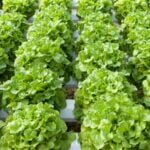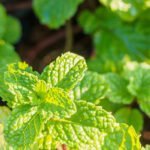Are you searching for the best soil for vegetable gardens? The success of your vegetable garden depends greatly on the quality of the soil it is grown in. In this article, we will explore the fundamental aspects of soil composition, pH levels, fertilizers, testing and analysis, soil structure improvement, mulching and composting, and specific recommendations for various vegetable varieties.
Soil is a crucial factor when it comes to growing a successful vegetable garden. It serves as a source of nutrients and support for plant roots, making it essential to understand how to create an optimal environment for your vegetables to thrive. By understanding the importance of choosing the best soil composition and maintaining its quality, you can set yourself up for a productive harvest year after year.
In this comprehensive guide, we will delve into the different components that make up high-quality soil for vegetable growth, while also discussing the significance of pH levels in relation to different types of soil. Furthermore, we will explore the advantages of using organic versus inorganic fertilizers to enrich the soil and provide essential nutrients for healthy vegetable growth. So let’s dive in and learn how to create the perfect foundation for a bountiful vegetable garden.
The Basics of Soil Composition
When it comes to cultivating a successful vegetable garden, the quality of the soil is paramount. The composition of the soil directly impacts the growth and yield of vegetables, making it essential to understand the key components that contribute to high-quality soil.
One of the essential components of high-quality soil for vegetable gardens is organic matter. Organic matter provides essential nutrients, improves soil structure, and enhances its ability to retain moisture. Compost, well-rotted manure, and cover crops are excellent sources of organic matter that can be incorporated into the soil to promote optimal vegetable growth.
In addition to organic matter, good soil for vegetable gardens should also contain adequate levels of minerals and nutrients such as nitrogen, phosphorus, and potassium. These essential elements play a crucial role in supporting plant growth, flowering, and fruiting. Soil testing is an effective way to determine if the soil contains sufficient levels of these nutrients and identify any deficiencies that need to be addressed through fertilization.
Another important aspect of soil composition for vegetable gardens is its texture. The ideal soil texture for vegetable gardening is loamy, which consists of a balance between sand, silt, and clay particles. Loamy soil provides good drainage while retaining moisture and nutrients, creating a favorable environment for root development and nutrient uptake by vegetables.
pH Levels and Soil Types
When it comes to creating the best soil for vegetable gardens, understanding the different types of soil and how pH levels can affect vegetable production is essential. The composition of soil plays a significant role in the health and yield of your vegetables, making it crucial to comprehend how pH levels and soil types can impact plant growth.
There are several types of soil commonly found in gardening, including sandy soil, clay soil, silt soil, and loam soil. Each type has its own unique characteristics that can influence water retention, drainage, and nutrient availability. Understanding the specific qualities of each soil type is key to determining which one is best for your vegetable garden.
In addition to soil types, pH levels also play a critical role in vegetable production. The pH level measures the acidity or alkalinity of the soil on a scale from 0 to 14, with 7 being neutral. Most vegetables prefer a slightly acidic to neutral pH level ranging from 6.0 to 7.0.
Soil with a pH level outside of this range can lead to nutrient deficiencies and poor plant growth. Therefore, it’s important to test the pH level of your soil and make adjustments as needed to create an optimal growing environment for your vegetables.
To ensure you have the best soil for vegetable gardens, consider the following tips:
- Conduct a soil test using a home testing kit or seek professional assistance for accurate results.
- Choose the right type of plants based on your soil type and make any necessary amendments.
- Regularly monitor the pH levels in your garden and make adjustments using natural additives like compost or organic fertilizer.
By understanding the relationship between pH levels and different types of soil, you can create an ideal environment for your vegetables to thrive and produce bountiful harvests.
Organic vs Inorganic Fertilizers
When it comes to enriching the soil for vegetable gardens, one of the key decisions that gardeners face is choosing between organic and inorganic fertilizers. Both types of fertilizers have their advantages and disadvantages, so it’s important to consider the specific needs of your vegetable plants before making a decision.
Organic fertilizers, such as compost, manure, and bone meal, are derived from natural sources and contain a wide range of nutrients that are released slowly over time. These fertilizers not only provide essential nutrients to the soil but also improve its overall structure and microbial activity. Additionally, they are environmentally friendly and sustainable, making them a popular choice for organic gardeners who prioritize natural methods of plant nutrition.
On the other hand, inorganic or synthetic fertilizers are manufactured with specific concentrations of nutrients that are immediately available to plants. While they can effectively boost plant growth in the short term, overuse of inorganic fertilizers can lead to an imbalance in soil pH levels and nutrient deficiencies. However, they can be a quick and convenient solution for correcting nutrient deficiencies or promoting rapid growth during certain stages of the growing season.
Ultimately, the best approach is often a combination of both organic and inorganic fertilizers, as this allows gardeners to reap the benefits of each type while mitigating their respective drawbacks. By understanding the specific nutrient requirements of different vegetables and regularly testing the soil for imbalances, gardeners can tailor their fertilizer regimen to create the optimal growing conditions for their vegetable gardens.
Soil Testing and Analysis
Soil testing is a crucial step in preparing the best soil for vegetable gardens. Before planting your vegetables, it’s important to understand the composition and characteristics of your soil. Testing the soil can provide valuable information about its pH levels, nutrient content, and overall health, which is essential for determining the type of fertilizers or amendments needed to optimize growth.
The Importance of Soil Testing
Soil testing helps identify any deficiencies or imbalances in the soil, allowing gardeners to make informed decisions about how to improve it. By understanding the specific needs of the soil, you can avoid over-fertilization or under-fertilization, which can negatively impact plant growth.
Additionally, knowing the pH level of your soil is vital as it determines the availability of essential nutrients to plants. The results of soil testing will guide you in creating a suitable environment for healthy vegetable growth.
How to Interpret Soil Test Results
Interpreting the results of a soil test may seem daunting at first, but with some guidance, it can be a straightforward process. Typically, soil test reports provide recommendations for adjusting pH levels and adding specific nutrients based on deficiencies.
Understanding these recommendations will help you choose the right fertilizers or organic amendments to create an optimal growing environment for your vegetables. Whether adjusting pH levels with lime or sulfur, or adding fertilizers high in nitrogen, phosphorus, or potassium – interpreting your soil test results will empower you to make informed decisions about improving your soil for successful vegetable gardening.
By conducting regular soil tests and analyzing the results effectively, gardeners can ensure that they are providing their vegetables with the best possible growing conditions. This proactive approach allows for adjustments to be made before planting each season and ultimately leads to a bountiful harvest of healthy and vibrant vegetables.
Improving Soil Structure
When it comes to growing a successful vegetable garden, having the right soil structure is essential. The best soil for vegetable gardens is one that is well-draining, nutrient-rich, and has good aeration. An ideal soil structure allows plant roots to easily access water, air, and essential nutrients, leading to healthy and productive vegetable growth.
There are several techniques that can be employed to improve the soil structure in a vegetable garden. One of the most effective methods is incorporating organic matter such as compost into the soil. Compost helps to improve soil structure by increasing its ability to retain moisture, enhancing drainage, and providing a steady release of nutrients for plant growth. Additionally, adding compost can also help break up compacted soil, providing better aeration for plant roots.
Another way to enhance soil structure is by implementing no-till or minimum tillage practices. Tilling can disrupt the natural arrangement of soil particles and negatively impact its structure. By minimizing tilling, it is possible to preserve the natural aggregates within the soil, leading to improved water infiltration and root development.
Furthermore, utilizing cover crops can also contribute to improving the overall soil structure in a vegetable garden. Cover crops help prevent erosion, suppress weeds, and add organic matter back into the soil when they are turned over or mulched. This practice not only enhances the physical properties of the soil but also contributes to its long-term fertility.
By employing these tips and techniques for improving soil structure, gardeners can create an optimal environment for healthy vegetable growth. Whether it’s adding organic matter like compost, practicing no-till methods, or incorporating cover crops into crop rotation plans – all these approaches can lead to robust and productive vegetable gardens.
| Soil Improvement Technique | Impact on Soil Structure |
|---|---|
| Incorporating Organic Matter (Compost) | Enhances moisture retention and nutrient availability; improves drainage |
| No-Till or Minimum Tillage Practices | Preserves natural aggregates; improves water infiltration; supports root development |
| Utilizing Cover Crops | Prevents erosion; adds organic matter back into the soil; contributes to long-term fertility |
Mulching and Composting
Importance of Mulching
Mulching plays a crucial role in maintaining healthy and nutrient-rich soil in vegetable gardens. By covering the soil with organic materials such as straw, grass clippings, or compost, mulch helps to retain moisture, prevent weed growth, and regulate soil temperature. In addition, mulch gradually breaks down over time, adding valuable nutrients to the soil that are essential for promoting optimal vegetable growth.
Types of Mulch
There are various types of mulch available for vegetable gardens, including organic options such as wood chips, leaves, and straw, as well as synthetic materials like plastic or landscape fabric. Organic mulches not only provide nutrients to the soil as they decompose but also improve its structure and fertility. On the other hand, synthetic mulches offer effective weed control and moisture retention but may not contribute to the improvement of soil quality.
The Benefits of Composting
Composting is another beneficial practice for maintaining nutrient-rich soil in vegetable gardens. It involves decomposing organic materials such as kitchen scraps, yard waste, and plant debris to create a nutrient-dense compost that can be used to enrich the soil. Compost not only improves soil structure but also enhances its water retention capacity and promotes beneficial microbial activity.
Making and Using Compost
To make compost successfully, it is essential to combine the right balance of green (nitrogen-rich) and brown (carbon-rich) materials in a proper ratio while ensuring adequate aeration and moisture levels. Once matured, compost can be incorporated into the vegetable garden soil to boost its fertility and overall health. By regularly adding compost to the garden beds, you can ensure that the soil remains rich in nutrients and supports thriving vegetable plants throughout the growing season.
Combining both mulching and composting practices is an excellent way to maintain healthy and nutrient-rich soil in vegetable gardens while minimizing reliance on chemical fertilizers. By incorporating these techniques into your gardening routine, you can create an optimal environment for growing bountiful crops of fresh and flavorful vegetables.
The Best Soil for Specific Vegetables
When it comes to growing specific vegetables in your garden, having the right soil composition is essential for a successful harvest. Different vegetables have varying soil preferences, so it’s important to understand the ideal conditions for the specific plants you want to grow. By tailoring the soil to meet the needs of each vegetable variety, you can maximize their growth and yield.
For root crops such as carrots, radishes, and potatoes, loose and well-draining soil is crucial. Sandy loam or loamy soils are ideal for these vegetables as they allow for easy root penetration and prevent issues like rotting or deformation. Adding organic matter such as compost or aged manure can help improve the soil structure and provide essential nutrients for healthy root development.
Leafy greens like lettuce, spinach, and kale thrive in nutrient-rich soil with high organic matter content. They prefer slightly acidic soils with a pH range between 6.0 and 7.0. Amending the soil with compost or aged manure can enhance its fertility and create an optimal growing environment for leafy vegetables.
For tomatoes, peppers, and eggplants, a well-draining sandy loam soil with good fertility is best. These vegetables also benefit from warm soil temperatures, so planting them in raised beds can help promote faster growth. Adding a balanced fertilizer before planting can supply essential nutrients for strong plant development and abundant fruit production.
In summary, understanding the specific soil requirements for different vegetable varieties is crucial for achieving successful growth and harvest. By tailoring the soil composition to meet the needs of each plant, you can create an optimal growing environment that promotes strong root development, healthy foliage, and bountiful yields.
| Vegtable Variety | Ideal Soil Conditions |
|---|---|
| Root Crops (carrots, radishes, potatoes) | Loose, well-draining sandy loam or loamy soil; enriched with organic matter |
| Leafy Greens (lettuce, spinach, kale) | Nutrient-rich soil with high organic matter content; slightly acidic pH (6.0-7.0); amended with compost or aged manure |
| Tomatoes, Peppers & Eggplants | Well-draining sandy loam with good fertility; warm temperature; regular application of balanced fertilizer |
Conclusion
In conclusion, choosing the best soil for successful vegetable gardening is crucial for ensuring healthy and abundant harvests. The key takeaways from this article highlight the importance of understanding soil composition, pH levels, and the use of organic fertilizers to create an optimal environment for vegetable growth. It is essential to regularly test and analyze the soil, as well as implement techniques to improve its structure through mulching and composting.
By focusing on these factors, gardeners can create an ideal growing environment for specific vegetables, promoting strong root systems and vigorous plant growth. Whether it’s sandy or loamy soil, adjusting the pH level to suit the needs of different vegetables is vital for maximizing their potential yield. Furthermore, maintaining nutrient-rich soil through composting and mulching not only enhances moisture retention but also supports overall plant health and productivity.
In essence, a successful vegetable garden starts with the right soil. By implementing the principles outlined in this article and tailoring them to specific vegetable varieties, gardeners can create thriving gardens that produce an abundance of fresh, healthy produce throughout the growing season. Therefore, understanding how to choose and maintain the best soil for vegetable gardens is essential for anyone looking to cultivate a fruitful and bountiful harvest.
Frequently Asked Questions
What Is the Best Soil Mix for Vegetable Gardens?
The best soil mix for vegetable gardens should be well-draining to prevent waterlogging, yet with enough organic matter to retain moisture. A mix of compost, peat moss, and perlite or vermiculite can create a fertile and balanced soil for vegetables.
What Is the Best Top Soil for Vegetable Gardens?
The best topsoil for vegetable gardens is one that is rich in nutrients and organic matter. Look for a topsoil that is well-balanced with a good mixture of sand, silt, and clay. Avoid topsoils with excess rocks or debris that can hinder plant growth.
What Is the Best Soil for Tomatoes and Vegetables?
The best soil for tomatoes and vegetables is one that is well-aerated, fertile, and has good drainage. A sandy loam soil with added compost or aged manure works well for tomatoes and other vegetables, providing the right balance of nutrients and moisture retention.

If you’re looking to get into vegetable gardening, or are just looking for some tips on how to make your current garden better, then you’ve come to the right place! My name is Ethel and I have been gardening for years. In this blog, I’m going to share with you some of my best tips on how to create a successful vegetable garden.





